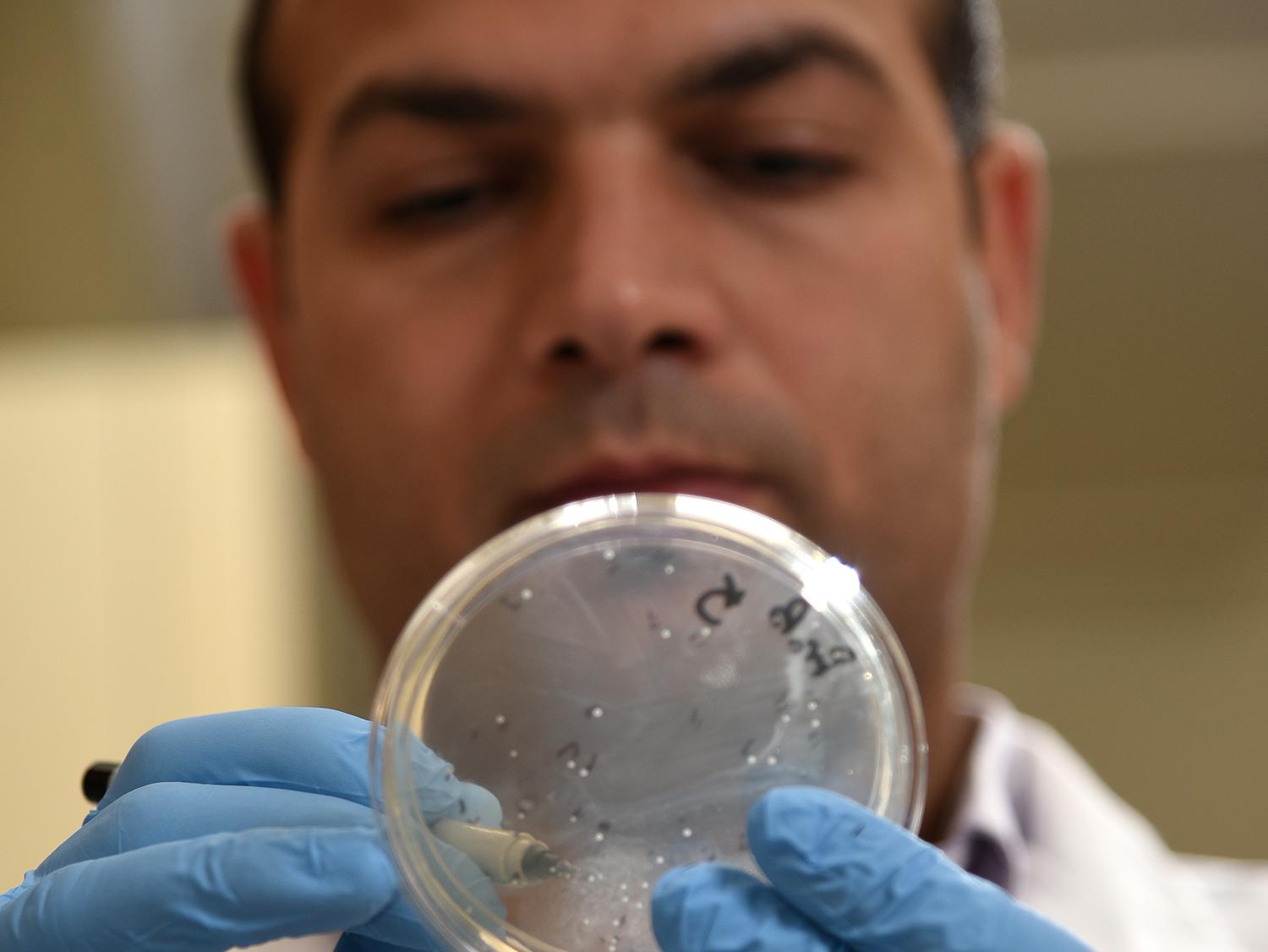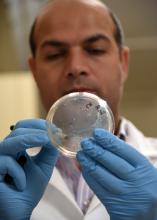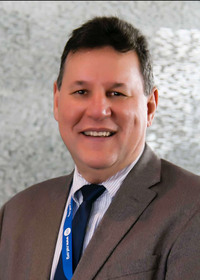Information Possibly Outdated
The information presented on this page was originally released on April 20, 2016. It may not be outdated, but please search our site for more current information. If you plan to quote or reference this information in a publication, please check with the Extension specialist or author before proceeding.
New technique helps scientists study listeria
STARKVILLE, Miss. -- Researchers at the Mississippi State University College of Veterinary Medicine pioneered a technique that can help advance the study of one of the deadliest foodborne bacteria in the United States.
Listeria monocytogenes, the bacterium that causes listeriosis, ranks No. 3 among the top five domestically acquired foodborne pathogens that cause death, according to 2011 estimates by the Centers for Disease Control and Prevention.
MSU researchers developed a faster, more efficient method of performing genetic studies of listeria, which will help scientists worldwide find ways to better control the pathogen and treat those who become ill from the bacterium.
“The study of these bacteria is important because listeria can survive most of the sanitation procedures and conditions that kill other foodborne bacteria,” said Dr. Mark Lawrence, a professor in the Department of Basic Sciences at the MSU College of Veterinary Medicine. “We know it can grow at refrigeration temperatures and can live in high and low acidity. It has a great ability to adapt.
“In the human body, it can cross the gastrointestinal tract and lead to septicemia and meningitis. It also can grow in white blood cells, which normally destroy bacteria in the body,” Lawrence said.
Listeria infection is most dangerous for pregnant women, newborns, immunocompromised individuals and adults over 65 years old. The bacteria can be found in deli meats, smoked seafood, unpasteurized milk, soft cheeses and other products.
For about five years, Lawrence and his colleagues have been working to understand which genes control certain functions in the bacteria. They want to know which ones allow it to attach to surfaces, adapt to different conditions and cross membranes in the human body. To study these abilities, they culture the bacteria, amplify the correct gene and then delete the gene in the listeria genome to examine the effects of the missing gene.
However, the techniques scientists use to delete genes in other bacteria have not worked efficiently for listeria, said Lawrence, who is also an associate dean of research at the college.
“The established method used by listeria researchers required a lot of hours of work and had a low success rate,” he said. “Our team used this method to delete two listeria genes, but we had other genes that we struggled to delete. We knew from talking with other researchers that we all had the same problem.”
Established methods required scientists to go through a process that involved screening hundreds to thousands of bacterial colonies to find the colonies with the correct gene deletion, said Dr. Attila Karsi, associate professor in the Department of Basic Sciences at the college.
“This process might take two to three weeks to find the colony you wanted, which is a very long and costly process,” he said.
The new method developed by the MSU researchers selects colonies of bacteria intended for study in an efficient way, eliminating the need for growing and searching through thousands of colonies.
“With this method of deleting genes, we can focus our energy on fixing the problem,” Lawrence said. “This technique can speed up research for scientists around the world who study listeria. We expect that it will be widely used and become a routine technique.”
By understanding how the bacteria make people sick, adapt to various environments, and attach to surfaces and food products, scientists hope to find ways to kill the bacteria and improve treatments for people who become sick.
“If we can figure out how it sticks to food products and food processing equipment, we can figure out ways to get rid of it,” Lawrence said. “It is not a common enough problem to vaccinate for, but when people are sick, we need better ways to treat it.”
The team has had about 15 requests for the new technique since the research paper detailing the method was presented at a research symposium in early 2015. The paper was published in the journal Plasmid on May 31, 2015, and currently ranks ninth in the most downloaded articles list.
Contact: Dr. Mark Lawrence, 662-325-1205; Dr. Attila Karsi, 662-325-0405





